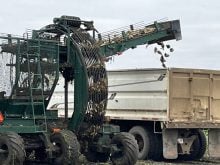Q: I am writing about the legality of putting a dam across a creek and completely stopping the flow of water. In particular, I am writing about Pipestone Creek, which originates in Saskatchewan and flows into Manitoba. The dam in
question was built by the Prairie Farm
Rehabilitation Administration in the 1950s, but I believe is now operated by Sask Water. When the flow is stopped it kills the fish in the creek and harms livestock watering
systems.
A: First of all, water is crown property, belonging to the province where it is located. Generally, one requires a permit or licence to use water, though most provinces allow domestic use and some agricultural use without a licence.
Read Also

Accurate accounting, inventory records are important
Maintaining detailed accounting and inventory records is not just a best practice; it’s a critical component of financial health, operational efficiency and compliance with programs like AgriStability.
The right to use water domestically does not include damming a creek and taking all the water. Further, the building of any water diversion such as a dam requires permission from the appropriate water authority. In Saskatchewan, it is the water corporation and in Manitoba, the water branch of Manitoba Conservation.
The flow of water between prairie provinces is governed by the 1969 Master Agreement on Apportionment of water entered into between the Canadian government and the three provincial governments. This agreement replaced a 1948 deal. The crux of the agreement is that the westerly provinces will take no more than half the water and allow the balance to flow into the neighbouring easterly province. The agreement also established the Prairie Provinces Water Board,
300 Ð2365 Albert St., Regina, Sask. S4P 4K1.
The board monitors water flows and deals with interprovincial flow issues. Provinces can also take disputes they can’t resolve to the Federal Court.
In response to my query, I was told that the dam in question remains a PFRA structure, but Sask Water directs the operations. The dam provides water for the town of Moosomin and area, including a regional park.
“In years or seasons of low flow, Manitoba has made requests in the past through the PPWB committee on hydrology that water be released from Moosomin reservoir. We also understand that in periods of high flows, Manitoba residents in the Pipestone valley have raised concerns to their RMs and to the Manitoba government over flooding,” a senior hydrologist for Sask Water told me.
Manitoba officials confirmed that water flows in Pipestone Creek have been discussed at PPWB. I was told there is a liaison committee of Manitoba and Saskatchewan RMs, along with provincial officials from both provinces, that provides forecasting and flow information on Pipestone Creek and operational advice on the Moosomin dam.
What recourse does a person have if he is concerned about water flows in an interprovincial waterway?
The course of action would be to take the complaint to the agency in your province of residence that handles water use issues. In your case, this would be the water branch of Manitoba Conservation.
If it felt there was legitimacy to your complaint, the branch would take up the issue with the PPWB.
Don Purich is a former practising lawyer who is now involved in publishing, teaching and writing about legal issues. His columns are intended as general advice only. Individuals are encouraged to seek other opinions and/or personal counsel when dealing with legal matters.














